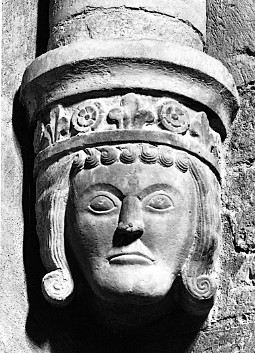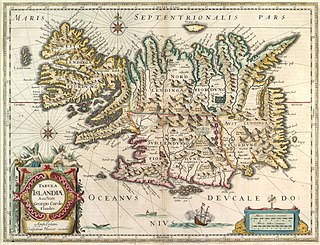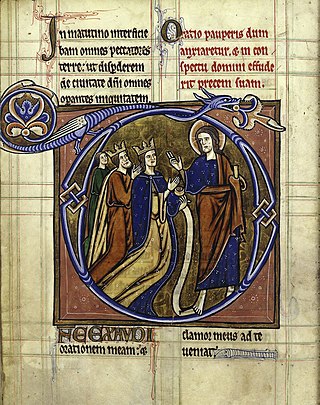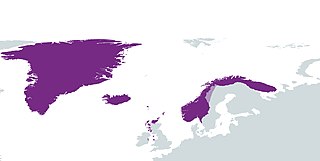
Haakon IV Haakonsson, sometimes called Haakon the Old in contrast to his namesake son, was King of Norway from 1217 to 1263. His reign lasted for 46 years, longer than any Norwegian king since Harald Fairhair. Haakon was born into the troubled civil war era in Norway, but his reign eventually managed to put an end to the internal conflicts. At the start of his reign, during his minority, Earl Skule Bårdsson served as regent. As a king of the Birkebeiner faction, Haakon defeated the uprising of the final Bagler royal pretender, Sigurd Ribbung, in 1227. He put a definitive end to the civil war era when he had Skule Bårdsson killed in 1240, a year after he had himself proclaimed king in opposition to Haakon. Haakon thereafter formally appointed his own son as his co-regent.

Birger Jarl, also known as Birger Magnusson, was a Swedish statesman and regent, jarl, and a member of the House of Bjelbo, who played a pivotal role in the consolidation of Sweden. His first marriage was to Princess Ingeborg of Sweden, which created his base of power. Birger led the Second Swedish Crusade, which established Swedish rule in Finland. Additionally, he is traditionally attributed with the foundation of the Swedish capital, Stockholm, around 1250. Birger used the Latin title of Dux Sweorum, and the design of his coronet combined those used by continental European and English dukes.

Eric XI Ericsson or Eric the Lisp and Lame was King of Sweden from 1222 to 1229 and again from 1234 to 1250. Being the last ruler of the House of Eric, he stood in the shadow of a succession of powerful Jarls, especially his brother-in-law Birger Jarl, whose descendants ruled as kings after his death.

Earl of Orkney, historically Jarl of Orkney, is a title of nobility encompassing the archipelagoes of Orkney and Shetland, which comprise the Northern Isles of Scotland. Originally founded by Norse invaders, the status of the rulers of the Northern Isles as Norwegian vassals was formalised in 1195. Although the Old Norse term jarl is etymologically related to "earl", and the jarls were succeeded by earls in the late 15th century, a Norwegian jarl is not the same thing. In the Norse context the distinction between jarls and kings did not become significant until the late 11th century and the early jarls would therefore have had considerable independence of action until that time. The position of Jarl of Orkney was eventually the most senior rank in medieval Norway except for the king himself.

The Birkebein Party or Birkebeinar was the name for a rebellious party in Norway, formed in 1174 around the pretender to the Norwegian throne, Eystein Meyla. The name has its origins in propaganda from the established party that the rebels were so poor that they made their shoes of birch bark. Although originally a pejorative, the opposition adopted the Birkebeiner name for themselves, and continued using it after they came to power in 1184.

Skule Bårdsson or Duke Skule was a Norwegian nobleman and claimant to the royal throne against his son-in-law, King Haakon Haakonsson. Henrik Ibsen's play Kongs-Emnerne (1863) is about the dispute between Duke Skule and King Haakon.

The Battle of Helgeå, or Battle of the Holy River, was a naval engagement which took place in 1026 between joint Danish and English forces and a combined Norwegian and Swedish force, at the estuary of a river called Helge in Sweden or Denmark.

The Age of the Sturlungs or the Sturlung Era was a 42–44 year period of violent internal strife in mid-13th century Iceland. It is documented in the Sturlunga saga. This period is marked by the conflicts of local chieftains, goðar, who amassed followers and fought wars, and is named for the Sturlungs, the most powerful family clan in Iceland at the time. The era led to the signing of the Old Covenant, which brought Iceland under the Norwegian crown.
Swedish jarls were powerful noblemen in Sweden. There usually was only one holder of the title at a time, second only to the King of Sweden.
Knut Haakonsson was a Norwegian nobleman and claimant to the throne during the Civil war era in Norway.
Sigurd Erlingsson Ribbung was a Norwegian nobleman and pretender to the throne of Norway during the civil war era in Norway.

Haakon Haakonsson the Young was the son of king Haakon Haakonsson of Norway, and held the title of king, subordinate to his father, from 1 April 1240 to his death. He was referred to as Haakon the Young to distinguish him from his father, who was sometimes correspondingly called Haakon the Old.
Gissur Thorvaldsson was a medieval Icelandic chieftain or goði of the Haukdælir family clan, and great-grandson of Jón Loftsson.

The Treaty of Lödöse was a peace treaty between the Swedish king Eric XI and the Norwegian king Haakon IV. The treaty was negotiated between King Haakon and the Jarl of Sweden, Birger Magnusson, in the town of Lödöse, during the summer of 1249. The main purpose of the treaty was to prevent mutual hostility from escalating into war. Some factions of the Swedish nobility wanted to attack Norway in retribution for a raid by King Haakon, which had targeted Norwegian rebels in the Swedish province of Värmland 24 years earlier.

Margaret Skulesdatter (1208–1270) was a Norwegian queen consort, spouse of King Haakon IV of Norway and queen consort of Norway from 1225 to 1263.

The House of Godwin was an Anglo-Saxon family who were one of the leading noble families in England during the last fifty years before the Norman Conquest. Its most famous member was Harold Godwinson, King of England for nine months in 1066.

Snorri Sturluson was an Icelandic historian, poet, and politician. He was elected twice as lawspeaker of the Icelandic parliament, the Althing. He is commonly thought to have authored or compiled portions of the Prose Edda, which is a major source for what is today known about Norse mythology and alliterative verse, and Heimskringla, a history of the Norse kings that begins with legendary material in Ynglinga saga and moves through to early medieval Scandinavian history. For stylistic and methodological reasons, Snorri is often taken to be the author of Egil's saga. He was assassinated in 1241 by men claiming to be agents of the King of Norway.

The House of Estridsen was a dynasty that provided the kings of Denmark from 1047 to 1412. The dynasty is named after its ancestor Estrid Svendsdatter. The dynasty is sometimes called the Ulfinger, after Estrid's husband, Ulf Jarl. The dynasty also provided three medieval rulers of Sweden and one of Norway. Their family coat of arms became the coat of arms of Denmark and therefore influenced the coat of arms of Tallinn and the coat of arms of Estonia.

Nobility in Iceland may refer to the following:

The term Norwegian Realm and Old Kingdom of Norway refer to the Kingdom of Norway's peak of power at the 13th century after a long period of civil war before 1240. The kingdom was a loosely unified nation including the territory of modern-day Norway, modern-day Swedish territory of Jämtland, Herjedalen, Ranrike (Bohuslän) and Idre and Särna, as well as Norway's overseas possessions which had been settled by Norwegian seafarers for centuries before being annexed or incorporated into the kingdom as 'tax territories'. To the North, Norway also bordered extensive tax territories on the mainland. Norway, whose expansionism starts from the very foundation of the Kingdom in 872, reached the peak of its power in the years between 1240 and 1319.














